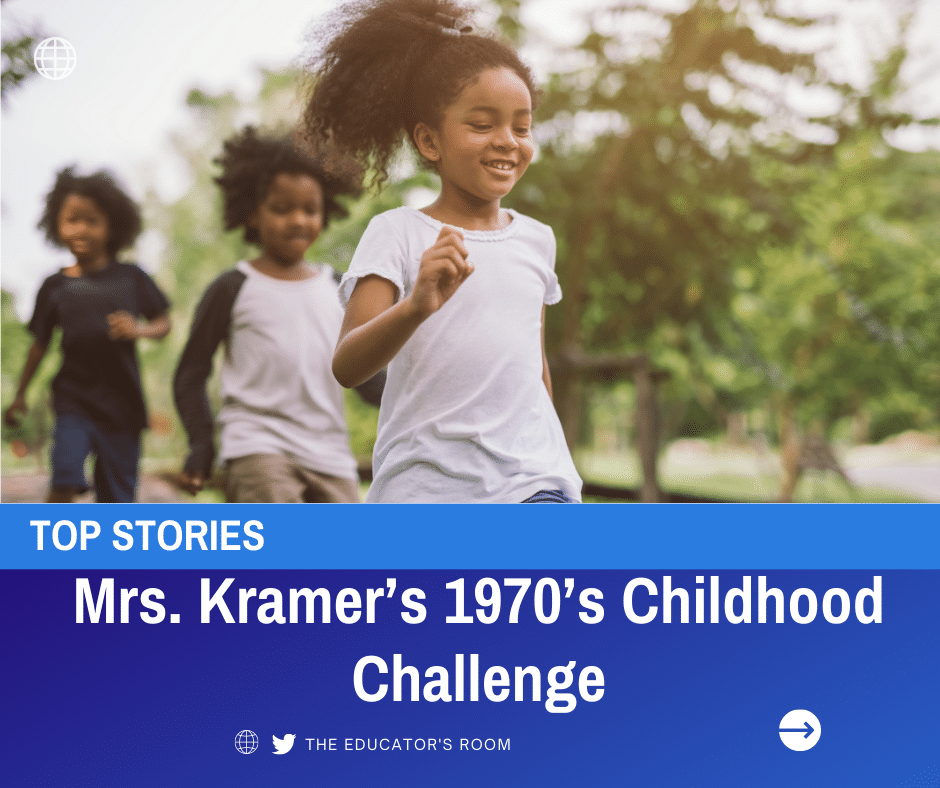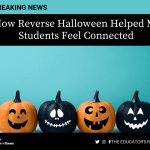Guest Writer: Kristina Kramer
After 30 years of teaching and 14 years of being a parent, it wasn’t the books, the courses, or the counseling that would so clearly encapsulate the purpose of my job as an educator and mom. It would be a 30-second video clip of a 10-year-old boy on a bike that would pierce my heart and show me what is really important in this world.
It was May of 2020 as I gently lifted my computer screen after a long day of Zoom and Google classroom. My unwashed hair was pulled back in a ponytail. My yoga pants weren’t seen by my 25 fourth graders, just my bright blue top, complete with the school logo along with my Telluride ballcap brought out especially for our “wear a hat to Zoom class” day. My eyes were bleary, so I popped on my blue light glasses to check work one last time before heading off to bed. I scrolled through my emails, opening one from the parent of a student that I’m a bit worried about. It’s a video. As I watch it, I set down my evening cup of Camomile tea and let the tears roll down my cheeks and onto my keyboard.
[bctt tweet=”What I witness is my dear sweet student, Jonah, who is new to our school this year. Jonah, who struggles with anxiety. Jonah, who goes to therapy for food aversion. And now, Jonah, who’s dad is a front line worker during the Covid 19 pandemic, while he stays home, isolated and afraid. ” username=””]
In the video, Jonah is attempting to ride a bicycle for the first time. It is a spring morning and the birds are chirping in the background along with the sounds of the chimes on the front porch where Jonah’s mom is filming. Jonah is on his bike, and he begins to take off. He’s shaky. He wobbles slowly, painstakingly down the driveway and onto the road. He glides a bit, then drops afoot. More gliding and toes touching the pavement until he shakes and shimmies then peddles on down the road. Jonah’s blue jacket flies behind him like Superman’s cape, while mom whispers encouragement all the way. And finally, Jonah stops and turns looking into the camera. At that moment we witness him beaming from ear to ear. His mom and I release a collective breath we didn’t know we were holding.
For a moment, Jonah wasn’t the kid with anxiety or the kid with tactile issues. He was just Jonah the boy on the bicycle in the spring of 2020.
He was completing a series I created on Google Classroom called, “Mrs. Kramer’s 1970’s Childhood Challenge.” It was something I started a month into the pandemic. I was worried about all of the screen time the children were being exposed to. I wanted a way to get them off the screen and out of doors. Having grown up in the ‘70s much of my childhood was spent outside in the woods, on bikes, and in neighborhoods. Youth sports were not yet a “thing,” and parents were rarely at practices, sometimes at games, and never driving hours a day for athletics. I always wrestled with finding the balance between letting my own son join the multitude of activities with his friends (knowing it meant this new spinning plate parenting style) and keeping him home and outside, but alone.
They say there is always a blessing in dark times, and this was it, my chance to share my 1970’s childhood with 25 children of 2020. Having grown up in the time before the electronics craze, kids socialized outdoors with friends and neighbors. We did the normal games of four square, tag, and kick the can, but we also used our imagination to create plays and shows for our families. We built forts in the woods or backyards, and we rode our bikes everywhere, complete with banana seats and fringe dangling off the handlebars. The common rule for most families was to be home by the time the streetlights came on. That was it. Could I effectively transfer some of this 1970’s magic to 2020? With parents pulling their hair out trying to home school and kids at risk of becoming virtual zombies, I knew I had to try. As a mom, I know the trick that if something is assigned by a teacher, it becomes law. Would it work for this?
Jonah was only first in a long line of wonders from my 4th graders. My computer began flooding with pictures of Ava reading in a soccer goal in her yard, Maddox showing his homemade cookies with a big smile, Luchia standing at the end of a friend’s driveway chalking a message of hope, and Lilly proudly showing off a big bag of garbage that she collected in a local park for the Earth Day challenge. Like the first buds of spring, the challenges blossomed and grew. Landen proudly planted a mini garden. Jackie wrote in her journal on her trampoline, taking jumping breaks in between each paragraph. Vivi actually got a letter back from her mailman and began a penpal relationship, and Evan found the most beautiful natural heart in a tree during his nature walk. Within a month, the kids were buzzing about it each morning, eager to know the challenge of the day. Even parents were sharing their excitement about their child’s newfound skills and passions.
That’s when I knew that these were more than just fun activities to pass the time in quarantine. This was a way to give kids a gift they didn’t even know they wanted or needed, a gift of time, of fresh air, of connection to the earth, and values almost extinct.
[bctt tweet=”Fellow teachers and parents, this is what I call “wartime teaching:” life and death going on all over the world and a hefty dose of fear each morning for our children. In a time of crisis, we need to ask ourselves, “What is most important?”” username=””]
Fellow teachers and parents, this is what I call “wartime teaching:” life and death going on all over the world and a hefty dose of fear each morning for our children. In a time of crisis, we need to ask ourselves, “What is most important?” To this veteran teacher, the answer is fairly simple: read a really good book and write with a pencil in a notebook every day. Do math problems on paper or a whiteboard, perform real science experiments, and then… get outside.
Now 10 months into this pandemic and countless hours on my computer, I finally get it. As sure as I sit here, I know this to be true. The world will go back: back to work, back to sports, to driving kids from activity to activity, to eating in the car, to falling into bed at night exhausted from all of the running. But I have one hope. My deepest hope for our children is that as life returns and the children of 2020 grow up to become the adults who do the driving and the running, there is some small gem inside of them, a diamond of remembrance of 2020. The year the world stood still, a muscle memory if you will, of children playing outside, baking bread, making mud pies, getting lost in a good book under a tree with a gentle breeze blowing and building a fort in the snow. Just maybe they will pass this gem onto their children, and this gift won’t be lost.
Yes, a muscle memory of what childhood can and maybe even should be. A muscle memory, just like riding a bike.






